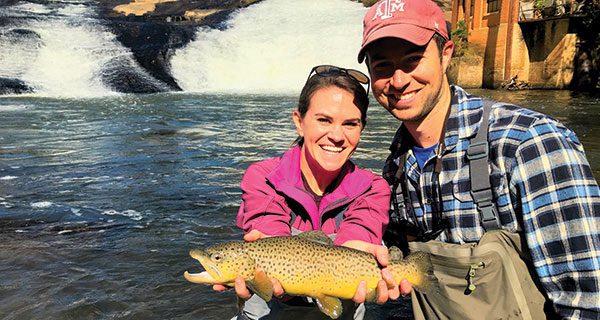Winter trout angling can be very productive for anglers willing to brave the elements. During this time of year, many anglers have put away their tackle, waiting on warmer days of spring to venture back on the water. The truth is, winter is one of the best times of the year to be on the water for trout anglers, as angling pressure is at its lowest, and fish are still feeding during the warmer hours of the day.
One thing many anglers struggle with is fly selection. Sure, most biomass found in rivers during colder months is often smaller and darker, but there is more to the story than just that. Understanding available food for trout during the winter will help you have more successful days on the water.
The little black stonefly hatch is probably one of the best kept secrets during the winter. Often, these insects are very small, dark and are hard to see flying in the air. One of the best ways to notice when these bugs are hatching is to see them crawling on your waders or clothing. When they are active, fish gorge themselves on these bugs.
There are many different patterns to mimic the little black stones, but I like to keep it simple. Some of my favorite patterns include black Lightning Bugs, black Copper Johns, black Pheasant Tails, and black Hare’s Ears, all in sizes 14-18.
If you turn over a rock this time of year, chances are you will see small dark-colored mayfly nymphs crawling on the underside of the rock. Typically, these are small blue-winged olive nymphs. These insects can be found in most all trout streams in our region during
February, and just because you don’t see adults flying around doesn’t mean the fish aren’t eating the nymphs below the surface. Try patterns such as olive Pheasant Tails, Split Case (BWO), and Mighty May Sloan Baetis nymphs, all in sizes 16-20.
Another strong player during the colder months is an assortment of small midges. Many days, swarms can be seen dancing around near the water’s surface. This can often be tough to mimic with flies. I keep it simple with my midge selection, and often I will pass on the single fish rising to midges as these fish can be very hard to fool. Having said that, there are many fish on or near the bottom of the stream that will not pass up small midge larvae. A heavy hitter would be the black Zebra Midge, but some of our favorites around the area include a Root Beer Midge, Diamond Midge, and Evenson’s 2be Midge Larva in black. These insects are much smaller, so you will want to drop down to sizes 18-22.
February offers up some great fishing for anglers willing to get on the water. Dress for success, and be sure to carry plenty of split shot to get your offerings down to where the fish are hiding. Typically, focus most of your angling time around the warmer portions of the day when the fish are most active. Be sure to pack some of these patterns in your box, and you will have everything you need for some successful time on the water!
Jake Darling guides with Unicoi Outfitters out of Helen, Ga. See them online at www.unicoioutfitters.com.
